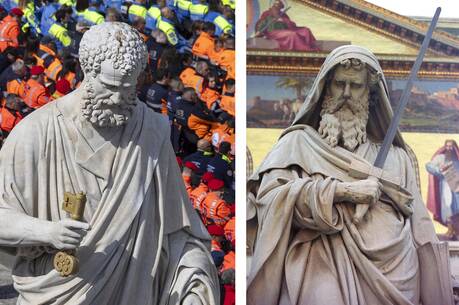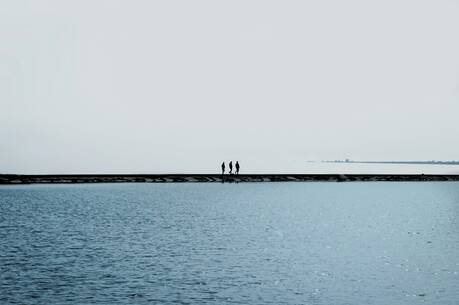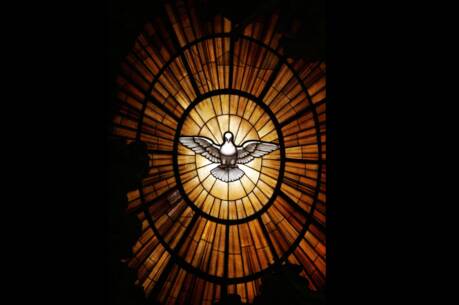To experience God, look at the people around you
Today’s Gospel shows Jesus training the disciples to be future leaders. They are put in an uncomfortable situation and must seek God’s help in order to survive.
‘Truly, you are the Son of God’ (Mt 14:33)
How do you recognize God in your midst during moments of crisis?
In what ways does the world affect your life?
Last Sunday we read about Jesus feeding the multitudes, inviting the disciples to participate in the miracle by offering loaves and fish to the crowd. The miracle reveals God’s interest in providing sustenance, and it alludes to the prophetic actions of Elijah and Elisha, who were also empowered by God to make a little bit of food go a long way (1 Kgs 17:8-16; 2 Kgs 4:42-44).
After the miracle is complete, Jesus withdraws and instructs his followers to take a boat across the Sea of Galilee. This brief journey includes a series of events, instructions and revelations that help the future leaders to strengthen their faith and more fully understand Jesus. In this training session, even the environment participates in the educational process.
First, Jesus goes to pray on a mountain, a location that recalls prophetic encounters with God, especially by Moses and Elijah, whom the first reading shows praying on Mount Horeb. While Jesus prays, the apostles struggle with waves and wind on the sea. Jesus appears and walks on the water, a sign of his divine power with echoes in the Old Testament (Job 9:8; Ps 77:19). Yet his followers fail to recognize him, declaring that Jesus is a ghost. Jesus comforts them, saying, “Take courage, it is I; do not be afraid.” The Greek for “it is I” is ego eimi, which literally means “I am,” the same assertion of the divine name made to Moses at the burning bush on Mount Horeb (Ex 3:14). This “I am” statement indicates divine presence, but the apostles seek further assurance.
Peter requires evidence that he is encountering God, and Jesus acquiesces by enabling Peter to walk on the water to him. But the wind blows around Peter, causing him to be frightened and sink into the water. Jesus helps but also criticizes his fear: “You of little faith, why did you doubt?”
Jesus’ walking on water is a theophany, a divine manifestation that allows the disciples to more fully understand and experience God. Their eventual response is telling, as they worship and proclaim Jesus’ divinity as the Son of God. While on the water, Jesus reveals himself to them, using a difficult experience to correct fears and increase understanding.
Reflecting on the Gospel, we can see ourselves as the disciples who encounter many unexpected and upsetting conditions and seek reassurance from God. Such reassurance is offered through our must coming to recognize God in our midst. A direct theophany like Jesus’ walking on water is unlikely, so we need to be attuned to the world around us and look for God in the places and people we encounter.
This article also appeared in print, under the headline “Training Leaders,” in the August 2020, issue.









